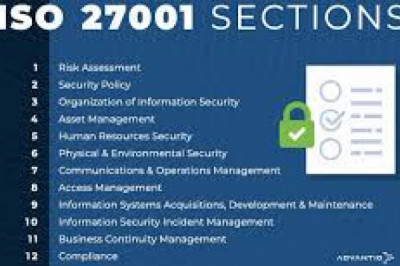views

Introduction
Conventional ideas of progress within business environments include profit margins and revenue flows. While these markers were strong indicators of success, the development of today’s business environment has reworked the definition of prosperity. ESG factors or Environmental, Social, Governance factors are the keystones of sustainable and ethical investments.
These investments are likely to not only have a positive long term impact on the organization but on all stakeholders affected by business activities. While this process can be intimidating, a growing number of organizations looking to make better investments have been quick to recruit ESG consulting or ESG advisory services for the best possible results. With over 71% (KPMG) of CEOs claiming personal responsibility to ensure organizations are adhering to some degree of ESG responsibility, the significance of the investment has never been more prevalent.
What is ESG
ESG covers sustainable investment opportunities. The term comes from consideration given towards environmental, social, and government-related opportunities. ESG factors are non-financial and have a long term impact on both the risk and return on investments. Companies that are enforcing stronger ESG standards are likely to implement better protocols creating a more cohesive and sustainable take on progress.
To build a strong ESG investment plan, three main factors must be considered;
- The Environment
Environmental awareness and the importance of sustainable practices has never been more important. With the rising awareness and content pushed to the masses about how we are losing the battle to save the planet, creating more environmentally conscious practices is imperative.
Businesses need to watch their consumption and impact on their surrounding environment. This means making a transition to sustainable energy sources, recycling where possible and instituting better practices to reduce overall waste. Additionally, businesses need to watch their greenhouse gas emissions, noise pollution and negative contributions to the environment.
2. Social Impact
Businesses run on stakeholder impressions. If a business is creating a negative impact on stakeholders, investors are likely to look at the business as viable, employees likely to quit and neighbouring communities, likely to cause an uproar. Getting socially compliant is in any organizations best interest, especially if they are looking at long term growth and development.
Taking into account employee morale, workspaces, safety, and convenience is critical to building a preferable work environment. When employees are content and feel secure within their space, productivity is likely to increase along with morale and loyalty to the organization.
3. The Government
One of the biggest challenges organizations face is compliance. The government enforced rules and regulations must be followed to a tee in order to prevent future fines, concerns and even closure. Additionally introducing the best possible governance standards internally is imperative to organizational success.
Ensuring there is a strong tax strategy in place along with ensuring that donations and political lobbying are conducted in compliance with rules is critical to a business’ long term success. Additionally, even the slightest inclination towards corruption and bribery must also be considered when trying to get certified as an ESG compliant company.
Sustainable investment helps organizations make good long term decisions. Instead of hoping for returns on time, effort and resources, introducing better investment methods help create a more reliable system of returns. Additionally, ESG investment assists with long term success generation. Implementing better practices now definitely has a strong impact as the company moves forward.
Why is ESG Important
81% of millennials today would like to know more about responsible investing (KPMG). Millennials are slowly gaining more power within professional and personal environments substituting the previous Gen Z. If there was ever a time for businesses to pay attention to the impact of their investments, the time is now.
Here are other factors enabling the importance of ESG investment;
- The Multi-Stakeholder Approach
For businesses looking to achieve growth and development on multiple frontiers, the ESG approach offers a solid method to assess value and impact across the board. Allowing businesses to take a more proactive approach allows the organization to mitigate risks and secure a strong position within their industry. Taking a stance on social issues helps investors and stakeholders alike understand where the business stands and is likely to see both current performance and future ambitions prosper.
Especially in light of the ongoing pandemic, customers are looking for businesses with a 360-degree approach to success. Revenue and profit generation is not enough. Ensuring Ecompliance, crafting strong environments for stakeholders and minimizing negative impacts on the environment have never been more important.
- Navigate the New Normal Effectively
Today’s business environment is packed with fierce competition. Introducing an effective ESG strategy helps businesses not only improve internal performance and manage risks but create a more prominent position for themselves within the market. There are five core considerations incorporated into crafting a successful ESG plan, these are;
- Material Issues
The material impact of ESG issues includes financial effects, environmental impacts,s, and social reactions. When introducing these issues as a consideration, companies are able to build long-term solutions. This, in turn, affects their ability to operate and preserve value.
2. Board and Management Oversights
Introducing strong ESG centric leadership at top-level management positions helps with the trickle-down effect. Additionally, it shows stakeholders the business is willing to “walk the talk” and is not treating sustainability as an afterthought. ESG concerns are not one size fits all. If upper management is able to fit ESG policies in with business structure, the company introduces better branding and association.
3. Program and Policy Innovations
For businesses to stay relevant, innovation is non-negotiable. ESG investments help open organizations up to new opportunities and expand on existing ones. Businesses are able to assess long term returns, compliance costs, new policies and ensure they are all in line with long term growth and building credibility with key stakeholders.
4. Metrics and Goals
ESG investments come with their own metrics and goals to understand the success of a venture. Additionally, corporations get to decide the best measures for improved implementation of the strategy creating better business results while incorporating better practices.
5. Integration
ESG programming allows businesses to detect or create new, more effective communication channels between stakeholders. The end result is better overall execution standards, an open understanding of roles/responsibilities, stronger identifiers of success and a better understanding of prospective strategies. This helps keep the business in line with public policies and stakeholder sentiments.
Conclusion
Over the next two decades, it is projected the investment into ESG opportunities will top USD $50 trillion (JDSupra). Introducing better practices is slowly becoming a non-negotiable part of long term businesses. Customers are less likely to buy from a business they cannot identify with or conduct activities non-ethically.
Introducing a 360-degree approach to stakeholders and other non-finance related growth factors helps create companies that not only thrive but are able to contribute to their environment positively. Customers stay loyal to brands they believe in. Creating that belief comes from trust. The trust is crafted by businesses paying attention to every possible factor and allotting it importance within business strategy.
Introducing a 360-degree approach to stakeholders and other non-finance related growth factors helps create companies that not only thrive but are able to contribute to their environment positively. Customers stay loyal to brands they believe in. Creating that belief comes from trust. The trust is crafted by businesses paying attention to every possible factor and allotting it importance within business strategy.












